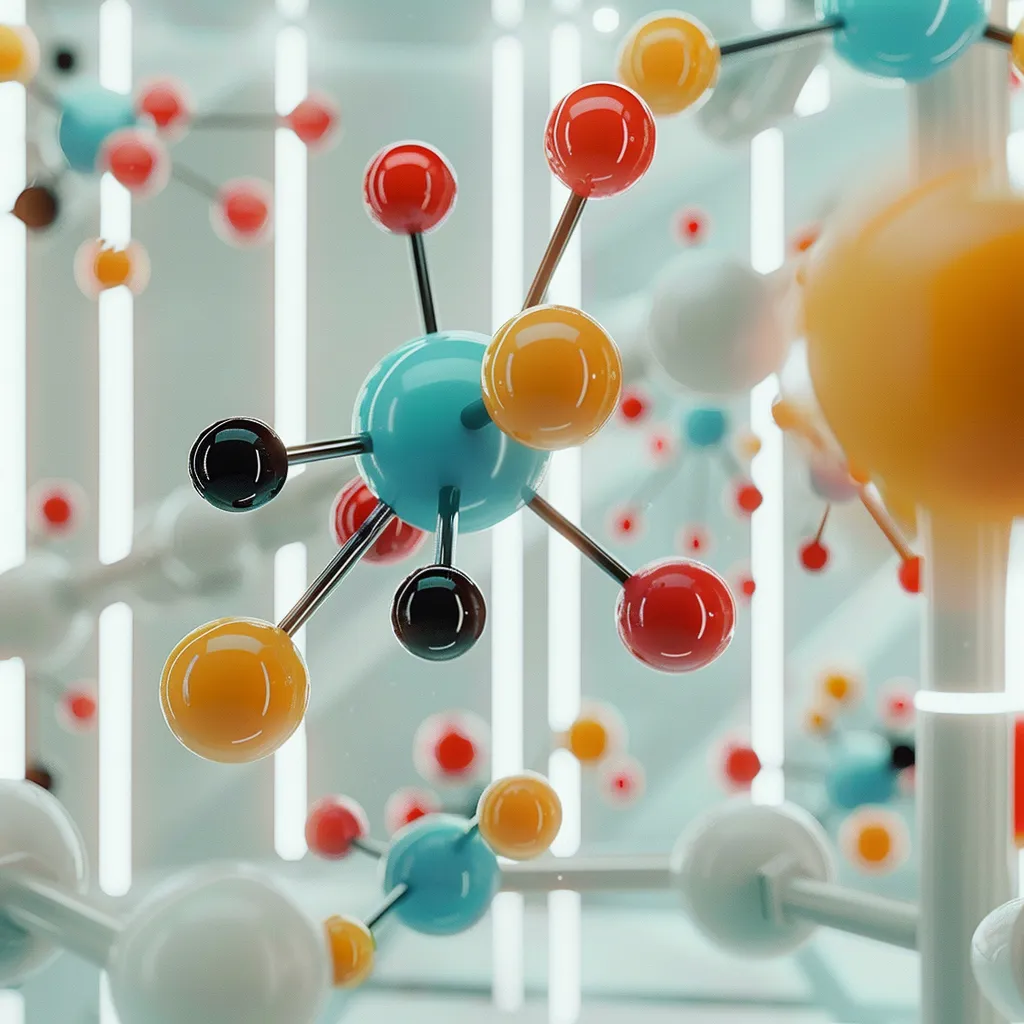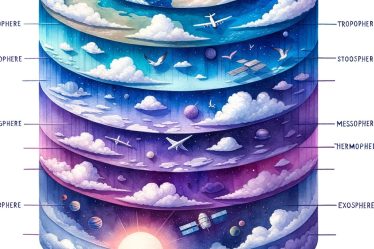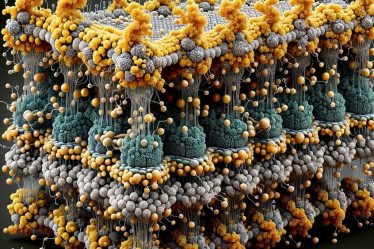
Imagine two compounds with the same number of atoms, yet one smells like oranges while the other smells like lemons.
This difference occurs because of isomerism—where molecules have identical molecular formulas but different structures. These structural changes can lead to distinct chemical and physical properties, just like the scents in these fruits.
Isomers are divided into two main types: structural isomers, where atoms are connected in different ways, and stereoisomers, where the arrangement of atoms in space varies. A molecule’s structure directly affects its behavior in chemical reactions.
Isomerism and Isomer: Quick Summary
Do you just need the basics? Here’s a simple explanation of what is isomerism and types of isomerism:
🟠 Isomer: Compounds with the same molecular formula but different structures, leading to unique physical and chemical properties.
🟠 Isomerism: The phenomenon where molecules with the same formula have different atomic arrangements, affecting how they behave.
🟠 Structural isomers: Isomers that differ in how their atoms are connected, including chain isomers, positional isomers, and functional isomers.
🟠 Stereoisomers: Compounds with the same atomic connections but different spatial arrangements, such as geometric (cis-trans) and optical isomers.
🟠 Conformational isomers: Molecules that differ by rotation around a single bond, like the staggered and eclipsed forms of ethane.
🟠 Tautomers: Isomers that can rapidly interconvert by shifting protons, such as keto-enol tautomerism in acetone.
🟠 Ring-chain isomers: Compounds that exist in both open-chain and cyclic forms, like hexane and cyclohexane.
If you find structural isomerism and stereoisomerism challenging, don’t worry! Personalized tutoring or interactive chemistry lessons make these concepts more straightforward. Explore more chemistry topics and broaden your knowledge with our free World of Chemistry blogs.
What is Isomerism
Isomerism occurs when two or more compounds have the same molecular formula but differ in the arrangement of their atoms. This difference in structure leads to unique chemical and physical properties.
Isomerism helps explain why compounds with identical chemical formulas can behave very differently in chemical reactions and physical properties like melting point or solubility.
Isomers are classified into two main types:
1. Structural isomers (or constitutional isomers):
Structural isomers differ in how their atoms are connected. Because their functional groups or carbon chains are arranged differently, these isomers can have distinct chemical properties. Common types of structural isomers include chain isomers, positional isomers, and functional isomers.
2. Stereoisomers:
Stereoisomers have the same connections between atoms but differ in how the atoms are arranged in space. This can dramatically affect how a compound interacts with other molecules. The two main types of stereoisomers are geometric isomers and optical isomers.
Let’s look at a breakdown of the different types of isomerism.
Table: Types of Isomers
| Type of Isomerism | Description | Example |
| Structural Isomerism | ||
| Chain Isomerism | Different arrangement of the carbon skeleton. | Butane ($ \text{C}_4\text{H}_{10} $): n-butane and isobutane |
| Positional Isomerism | Functional group attached at different positions on the carbon chain. | Butene ($ \text{C}_4\text{H}_8 $): 1-butene and 2-butene |
| Functional Isomerism | Different functional groups with the same molecular formula. | Propanol and methoxyethane ($ \text{C}_3\text{H}_8\text{O} $) |
| Ring-Chain Isomerism | Compounds that can exist as open chains or rings. | Hexene and cyclohexane ($ \text{C}_6\text{H}_{12} $) |
| Tautomerism | Isomers that interconvert by relocating a proton. | Keto-enol tautomerism: acetaldehyde and vinyl alcohol |
| Stereoisomerism | ||
| Geometric Isomerism (Cis-Trans) | Different spatial arrangement around a double bond or ring. | 2-butene: cis-2-butene and trans-2-butene |
| Optical Isomerism (Enantiomers) | Non-superimposable mirror images due to chirality. | Lactic acid: D-lactic acid and L-lactic acid |
| Conformational Isomerism | Different rotations around a single bond. | Ethane ($ \text{C}_2\text{H}_6 $): staggered and eclipsed conformations |
Structural Isomerism: Types of Structural Isomers
Structural isomerism refers to molecules with the same molecular formula but differ in how their atoms are connected. These differences lead to unique chemical and physical properties.
The three main types of structural isomerism are chain isomerism, positional isomerism, and functional isomerism. Each type involves a different arrangement of atoms that influences how the molecules behave.
Chain Isomerism: Variation in Carbon Chains
In chain isomerism, a molecule’s carbon skeleton is arranged differently, even though the number of carbon and hydrogen atoms stays the same.
For example, butane has the molecular formula C₄H₁₀:
- n-butane has a straight chain:
$ \text{CH}_3-\text{CH}_2-\text{CH}_2-\text{CH}_3 $ - isobutane has a branched structure:
$ \text{CH}_3-\text{CH}(\text{CH}_3)-\text{CH}_3 $
Although both are butane, the difference in structure changes their boiling points and other physical properties.
Positional Isomerism: Changing Functional Group Positions
Positional isomerism occurs when the functional group is attached to different locations within the same carbon chain.
A common example is butene ($ \text{C}_4\text{H}_8 $), which can exist as 1-butene and 2-butene:
- 1-butene has a double bond between the first and second carbons:
$ \text{CH}_2=\text{CH}-\text{CH}_2-\text{CH}_3 $ - 2-butene has a double bond between the second and third carbons:
$ \text{CH}_3-\text{CH}=\text{CH}-\text{CH}_3 $
The double bond’s position affects the compound’s chemical reactivity and physical characteristics.
Functional Isomerism: Different Functional Groups
Functional isomerism occurs when the same molecular formula gives rise to different functional groups.
A good example is C₃H₈O, which can be either propanol (an alcohol) or methoxyethane (an ether):
- Propanol has a hydroxyl group (-OH):
$ \text{CH}_3-\text{CH}_2-\text{CH}_2\text{OH} $ - Methoxyethane has an ether linkage (-O-):
$ \text{CH}_3-\text{O}-\text{CH}_2-\text{CH}_3 $
Differences in functional groups lead to different chemical behaviors despite having the same molecular formula.
Stereoisomerism: Understanding Spatial Isomerism
Stereoisomerism occurs when molecules have the same molecular formula and atomic connections but differ in how their atoms are arranged in space. These isomers have the same bonds between atoms, but their three-dimensional structures are different.
This difference in spatial arrangement can lead to changes in physical and chemical properties, even though the molecular formula stays the same. Stereoisomers fall into two main categories: geometric isomers and optical isomers. Each impacts the behavior of molecules in unique ways.
Geometric Isomerism: Cis and Trans Isomers
Geometric isomerism (cis-trans isomerism) occurs when molecules have restricted rotation, usually around a double bond or within a ring structure. Because the atoms or groups cannot rotate freely, they can either be on the same side (cis) or opposite sides (trans) of the bond, creating two distinct isomers.
A good example is 2-butene (C₄H₈), which exists in two geometric isomeric forms:
- cis-2-butene: The hydrogen atoms are on the same side of the double bond.
$ \text{CH}_3-\text{CH}=\text{CH}-\text{CH}_3 $ (with the hydrogens on the same side). - trans-2-butene: The hydrogen atoms are on opposite sides of the double bond.
$ \text{CH}_3-\text{CH}=\text{CH}-\text{CH}_3 $ (with the hydrogens on opposite sides).
Even though both isomers have the same molecular formula, their structures make them behave differently. For example, cis-2-butene has a higher boiling point than trans-2-butene because of the different ways the molecules stack and interact.
Optical Isomerism: Chirality and Enantiomers
Optical isomerism occurs when a molecule contains a chiral center—usually a carbon atom bonded to four different groups. This creates two mirror-image molecules, called enantiomers, which cannot be superimposed on each other like your left and right hands. These enantiomers differ in how they rotate plane-polarized light and can have very different effects in biological systems.
For instance, lactic acid (C₃H₆O₃) has two enantiomers:
- R-lactic acid: Rotates light to the right.
- S-lactic acid: Rotates light to the left.
Although these forms of lactic acid are chemically identical, they interact differently with other chiral molecules, such as enzymes. For example, an enzyme in the body might recognize only one enantiomer, making the other ineffective or harmful.
Other Types of Isomerism
In addition to structural and stereoisomerism, several lesser-known types of isomerism show how molecules can differ while having the same molecular formula.
These are conformational isomerism, tautomerism, and ring-chain isomerism. Each type involves unique structural changes or flexibility that affect how molecules behave in different conditions.
Conformational Isomerism: Rotation Around Single Bonds
Conformational isomerism results from the rotation around single bonds. Unlike other types of isomers, conformational isomers (or conformers) can interconvert freely without breaking any bonds. This is common in alkanes, where single bonds allow for free rotation of attached atoms.
Ethane (C₂H₆) is a clear example, as it can exist in two key conformations: staggered and eclipsed.
In the staggered form, the hydrogen atoms on each carbon are as far apart as possible, which makes it more stable. In the eclipsed form, the hydrogens align, increasing electron repulsion and making it less stable. These forms rapidly interconvert as the molecule rotates around the single bond.
Tautomerism: Interconversion Between Isomers
Tautomerism is a unique form of structural isomerism where two isomers rapidly switch between each other by relocating a proton (H⁺). These isomers, called tautomers, exist in equilibrium and can convert depending on temperature or pH.
A classic example is keto-enol tautomerism. In acetone ($ \text{CH}_3\text{COCH}_3 $), the keto form (with a carbonyl group) can convert into the enol form (with a hydroxyl group and a double bond). This shift between forms can significantly impact the molecule’s behavior in chemical reactions.
Ring-Chain Isomerism: Open vs. Cyclic Structures
Ring-chain isomerism occurs when a molecule can exist in both an open-chain form and a ring form. Even though both forms have the same molecular formula, the atoms are connected differently, leading to distinct properties.
For instance, hexane (C₆H₁₂) is an open-chain hydrocarbon, while cyclohexane (C₆H₁₂) forms a ring. These structural changes result in different chemical and physical characteristics, such as boiling points and reactivity.
Advance Your Knowledge in Isomers
Isomers can seem confusing at first, but once you get how molecules with the same formula can have different structures, it starts to make more sense. The different types of isomerism really show how flexible chemistry can be.
Is isomerism tricky for you? A qualified chemistry instructor can explain complex topics in a way that makes sense to you, making organic and inorganic chemistry enjoyable.
Search for a tutor using phrases like “chemistry tutor Liverpool” or “chemistry teacher Edinburgh” on platforms like meet’n’learn. You’ll find someone who can tailor lessons to your needs.
If you prefer learning in a group, search for “chemistry classes Leeds” or “chemistry lessons London” online. The search will lead you to chemistry tutoring nearby.
Isomerism: Frequently Asked Questions
1. What is isomerism?
Isomerism occurs when molecules share the same molecular formula but have different structures, leading to distinct chemical and physical properties.
2. How are structural isomers different from stereoisomers?
Structural isomers differ in how atoms are connected, while stereoisomers have the same connections but differ in their 3D arrangement.
3. What are chain isomers?
Chain isomers are structural isomers where the carbon skeleton is arranged differently, either in a straight or branched form.
4. What is the difference between cis and trans isomers?
Cis isomers have groups on the same side of a double bond, while trans isomers have groups on opposite sides, affecting their physical properties.
5. How do optical isomers work?
Optical isomers, or enantiomers, are mirror images of each other that rotate plane-polarized light in opposite directions.
6. What is conformational isomerism?
Conformational isomerism involves different spatial arrangements of atoms due to rotation around single bonds, often seen in alkanes.
7. What is tautomerism in chemistry?
Tautomerism is a type of isomerism where isomers rapidly interconvert by shifting a proton, such as between keto and enol forms.
8. How do ring-chain isomers differ?
Ring-chain isomers can exist in an open-chain structure or as cyclic compounds like hexane and cyclohexane.
References:
1. ThoughtCo
2. Britannica
3. Wikipedia



